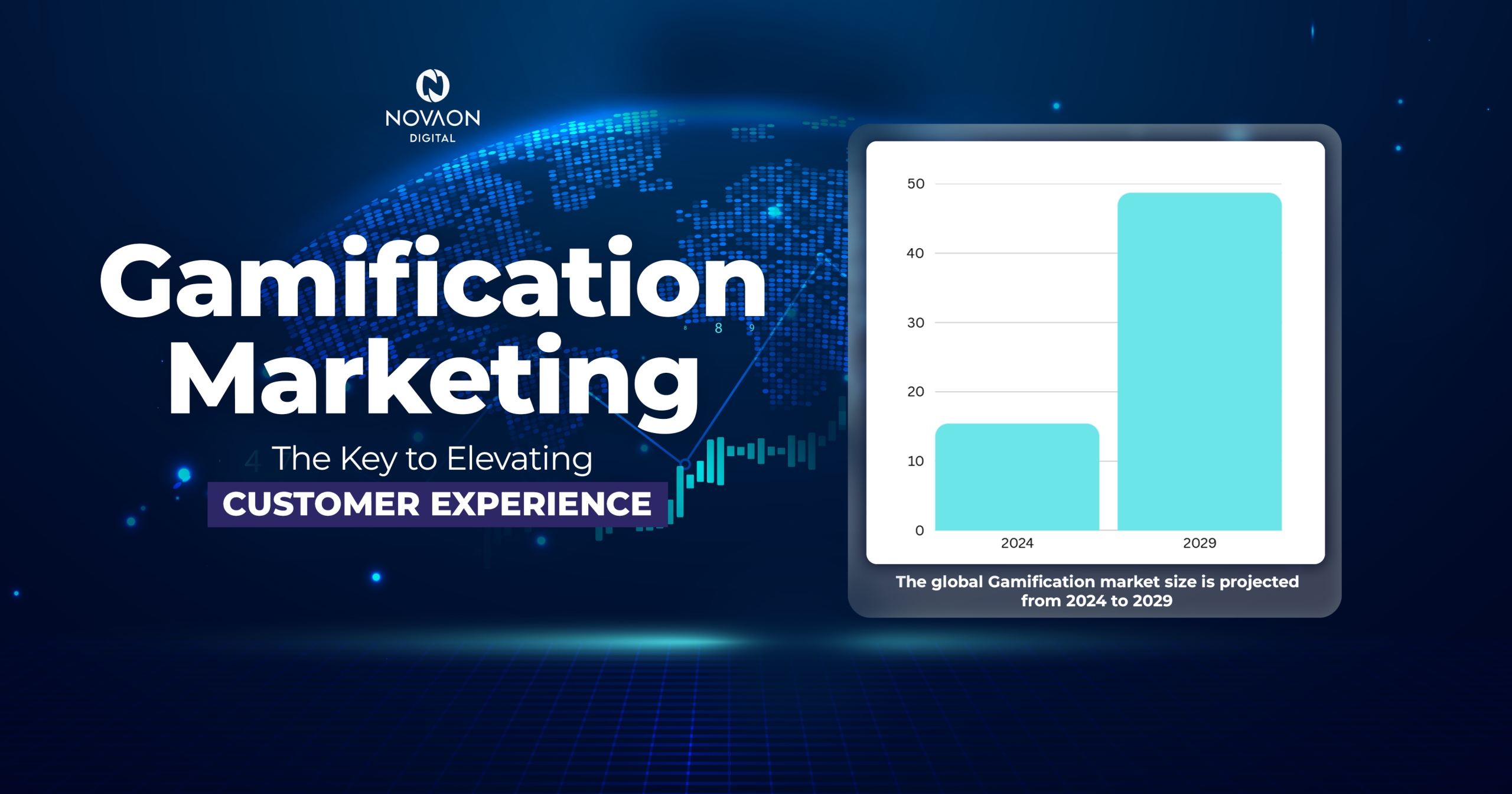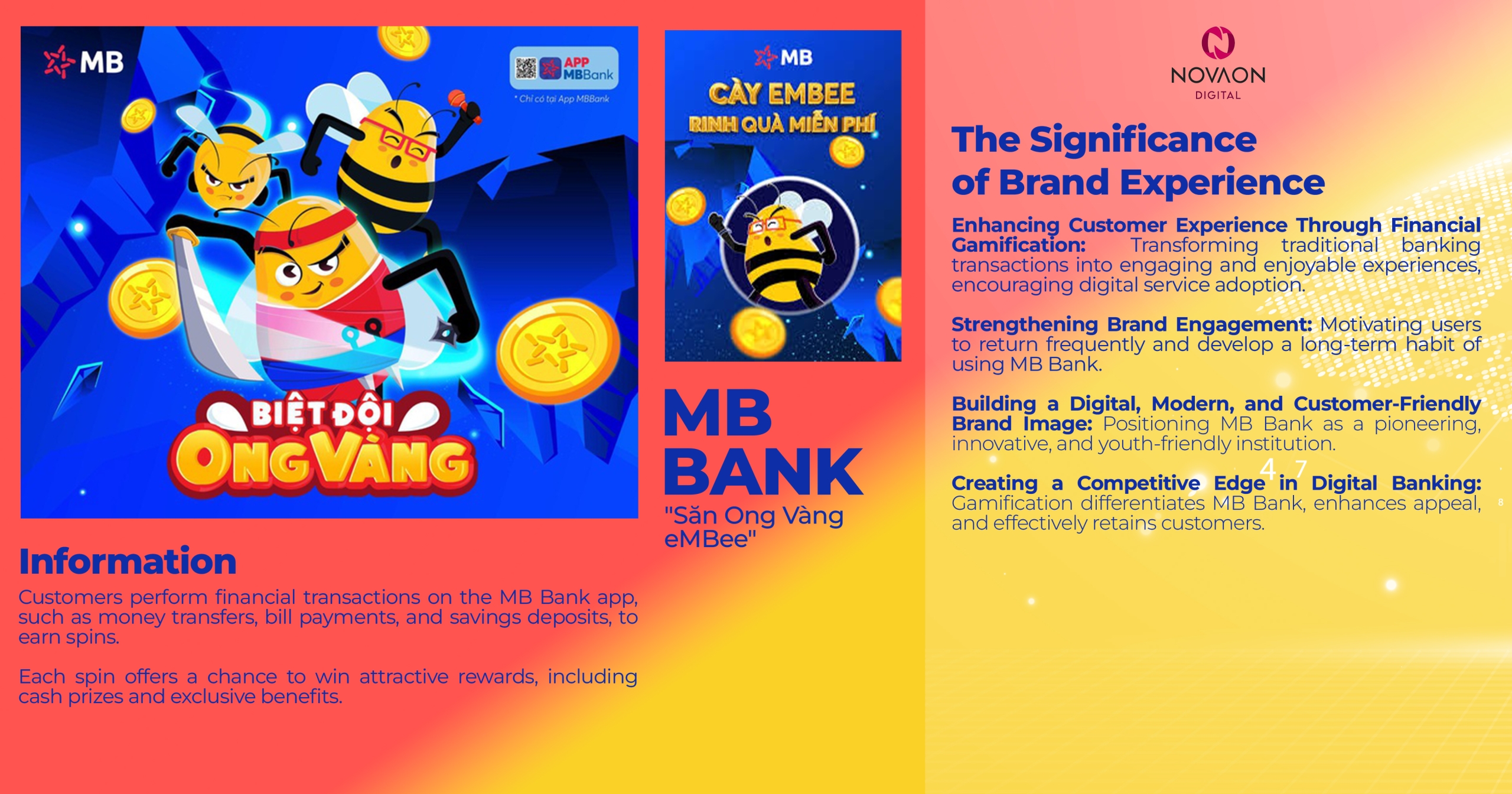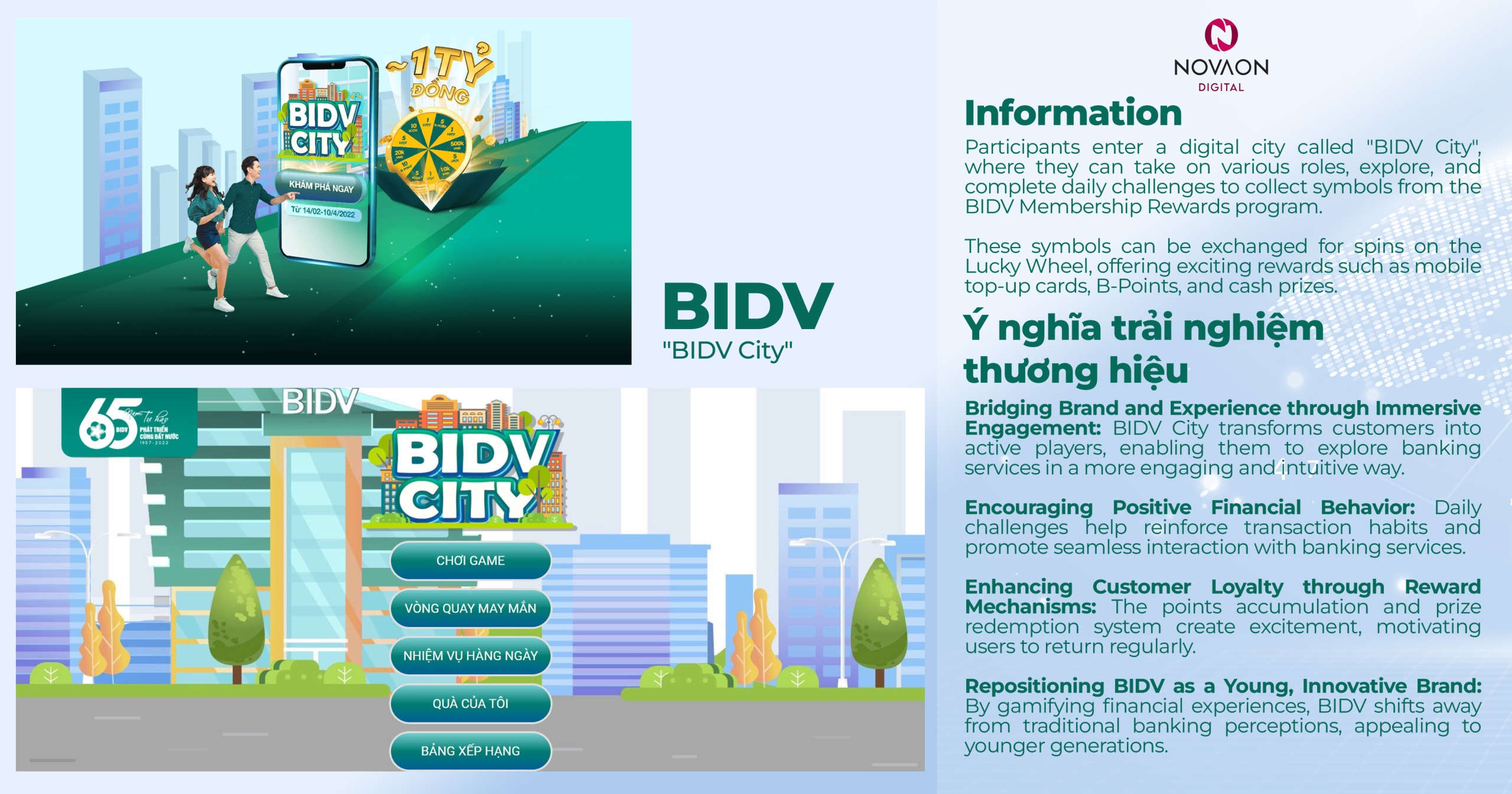
When technology evolves and user behavior shifts, banks and financial institutions can no longer stop at simply offering products and services. They must also create rich, engaging interactive experiences to attract and retain customers. Gamification, with its ability to incorporate game elements into marketing activities, has been opening up a new path for the financial and banking sector in building customer loyalty and enhancing brand value.
Gamification Marketing: The Key to Elevating Customer Experience
Amidst a wave of digital transformation, the financial and banking industry is undergoing significant changes to meet increasingly high customer expectations. The emergence of fintech companies and digital banks has intensified competition, forcing traditional financial institutions to innovate in order to attract and retain customers. One standout strategy being implemented is gamification marketing—the integration of game elements into marketing activities to boost user engagement and experience.

According to a report by Mordor Intelligence, the global gamification market is expected to reach USD 15.43 billion in 2024 and grow at a CAGR of 25.85% to reach USD 48.72 billion by 2029. The widespread adoption of smartphones and mobile devices has fueled the expansion of this sector. As users shift from desktop to mobile and internet-connected devices, banks are presented with a favorable environment to tap into, enhancing customer access and conversion. In recent years, in response to market demand and evolving consumer behavior, many businesses—both domestic and international—have incorporated gamification into their customer engagement strategies. This trend reflects the effort of banks to deliver an appealing digital experience aligned with the expectations of younger generations such as Gen Z and Gen Alpha.
Customer behavior in the financial and banking sector is also undergoing a notable shift. Today’s customers not only seek quality financial products and services but also desire engaging, personalized, and interactive user experiences. They are easily drawn to meaningful stories told in simple, fun, and entertaining ways. The application of gamification makes complex financial products or services more accessible, user-friendly, and naturally embedded in the customer’s mind.
These changes highlight the vast potential of gamification in enhancing brand experience for customers and creating a competitive edge for banks. By applying gamification, financial institutions can better meet customer needs and expectations, while fostering stronger engagement and loyalty to their brand.
Why is Gamification becoming a trend in Bank-Finance marketing?
According to data from Mordor Intelligence, the global gamification market reached USD 58.71 billion in 2022. The exponential growth of smartphones and mobile devices has fueled the expansion of this market. Today, gamification is no longer merely a form of entertainment—it plays a vital role in boosting engagement, enhancing user experience, and building customer loyalty. This is especially relevant in the financial and banking sector, where products and services are often complex and lack appeal for the general public. Gamification introduces a more intuitive and engaging approach.
- Enhancing engagement: Games, challenges, and reward systems encourage customers to actively explore and use financial services. When users participate in gamified activities, they not only access information more easily but also feel a stronger connection to the brand.
- Improving user experience: Instead of dry financial procedures, gamification turns tasks such as account opening, conducting transactions, or learning personal finance management into enjoyable and highly motivating activities. This not only helps customers access banking services more easily but also reduces psychological barriers to using financial products.
- Building customer loyalty: Through ranking programs, reward points, and exclusive offers, customers are motivated to maintain long-term relationships with banks. Loyal customers are not only more valuable in terms of revenue but also serve as organic promoters when they recommend services to friends and family.
Additionally, banks can gather valuable behavioral data through gamification. By observing how users engage with games, challenges, and reward systems, banks can gain deeper insights into consumer habits, thereby optimizing marketing strategies and developing more relevant products.
Forms and Applications of Gamification Marketing in the Financial – Banking Industry
Point Systems and Customer Ranking
This is one of the most common applications of gamification in the financial sector. This mechanism allows customers to accumulate points based on their transactions, thereby reaching different tiers with attractive benefits. This approach not only encourages users to make more transactions but also creates a sense of achievement and brand engagement.
Monobank – “Achievement Badges” campaign

Case study: Monobank – “Achievement Badges” (Source: Purrweb, 2024)
Missions, Challenges, and Financial Rewards
Encouraging customers to participate in missions or challenges such as opening an account, making transactions, or referring friends to earn rewards. This is an effective way to promote desired behaviors and turn customers into brand ambassadors.
MB Bank launched “Golden Bee Hunt – eMBee”

Case study: MBBank – “Golden Bee Hunt – eMBee” (Source: Tapchinganhang, 2023)
Lucky Draws and Mini Games
Mini games and lucky draws are often used in promotional campaigns to create excitement for users. These games typically incorporate elements of chance, sparking curiosity and anticipation among customers.
Viettel Money – “Shake for Lucky Money: A Peaceful Tet – Sharing Love 2022”

Case study: Viettel Money – “Shake for Lucky Money: A Peaceful Tet, Sharing Love”
(Source: Novaon Digital, 2022)
Financial Simulation & Modeling
Applications can integrate simulation games that allow customers to experience realistic financial scenarios such as budgeting, investing, or retirement planning. These models are not only entertaining but also enhance personal financial literacy.
BIDV – “BIDV City” program

Case study: BIDV – “BIDV City” Program (Source: BIDV, 2022)
The Future Trend of Applying Gamification Marketing in the Banking Industry
Gamification Marketing is entering a booming phase, with the market size expected to exceed USD 58 billion by 2030. Research by McKinsey and BCG indicates that the main drivers of this growth are technological innovation and the increasing demand for personalized customer experiences. For the banking industry, gamification is not only a marketing strategy but also a key to enhancing user experience and building customer loyalty.
Integration with Emerging Technologies
The fusion of gamification with advanced technologies such as AI, blockchain, and the metaverse is unlocking unprecedented possibilities. AI enables the personalization of user journeys, analyzing data to create challenges and rewards tailored to each individual. Blockchain ensures transparency in reward programs, reinforcing customer trust. Meanwhile, the metaverse transforms banking into a digitized interactive space where customers can engage in gamified activities within a virtual environment.
Personalized Gamification: The Right Experience at the Right Time
Big data is enabling banks to build gamification campaigns that are finely tuned to each customer’s needs and behavior. Instead of applying fixed programs, banks can design custom challenges—from cashback rewards for reaching spending milestones to flexible point systems based on financial behavior. The experience is no longer one-dimensional but becomes a personalized journey, where every customer feels like they are part of a game designed just for them.
Expanding Beyond Traditional Banking
Gamification is no longer confined to traditional banking but is spreading across the digital finance ecosystem. Fintechs and super-apps are leveraging gamification to attract and retain users, with offerings ranging from “financial mission” investment programs to point systems for payments or savings. As the lines between banking and financial technology blur, gamification will become a vital tool for financial businesses to build long-lasting customer relationships.
The future of gamification in banking is not just a race of technological innovation, but a journey toward creating more meaningful customer experiences. In an increasingly competitive landscape, the banks that know how to turn financial transactions into engaging journeys will be the ones that lead the way.
Conclusion
In the context of an increasingly competitive financial and banking sector, the application of Gamification Marketing not only enhances customer experience but also creates a sustainable competitive advantage. Changes in consumer behavior, along with technological advancements, will continue to shape how financial institutions build their marketing strategies in the future.
Novaon Digital is proud to be a specialist in brand experience consulting solutions for businesses, aiming for sustainable brand development and revenue growth. Through the analyses presented in this article by Novaon Digital, managers in the financial and banking sector can build flexible marketing strategies, optimize resources, and enhance competitiveness. Innovation is essential, but a proactive mindset and sharp sensitivity to market trends are the true keys for businesses to adapt and thrive in an ever-evolving economy.
Learn more about Novaon Digital’s Employee Advocacy solutions here.
Source: Brandsvietnam



